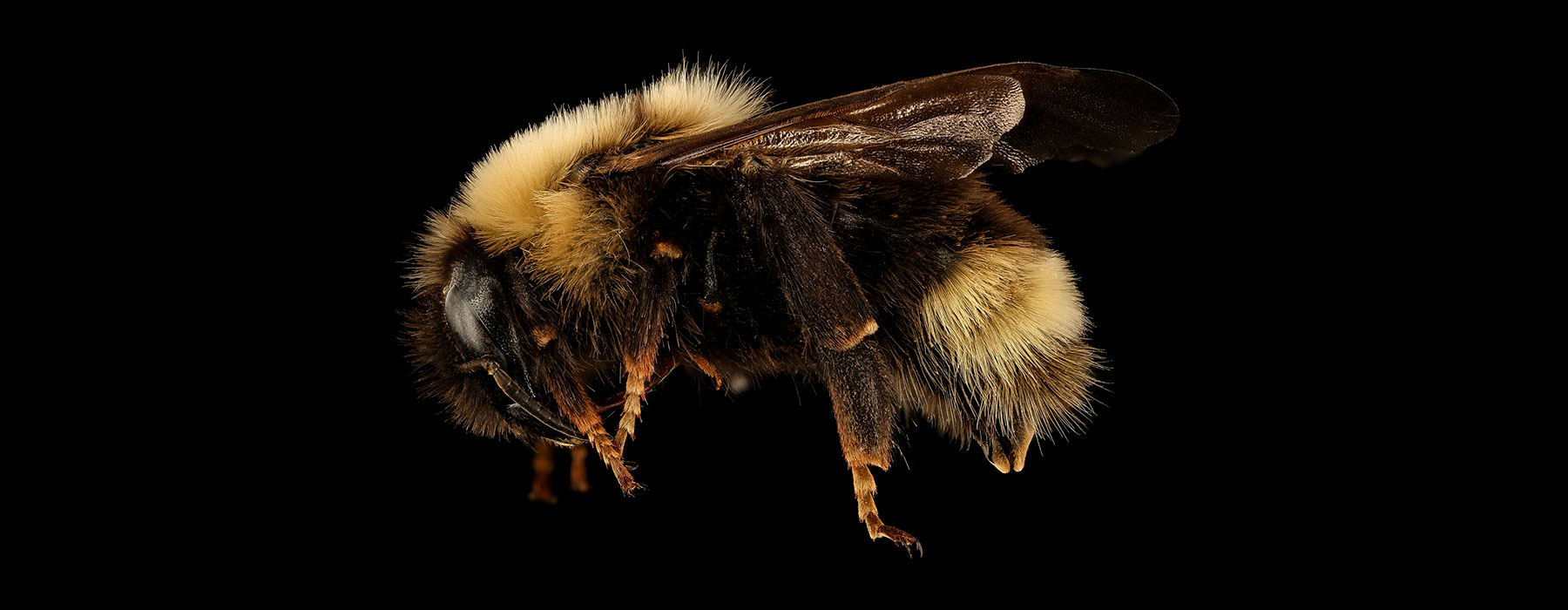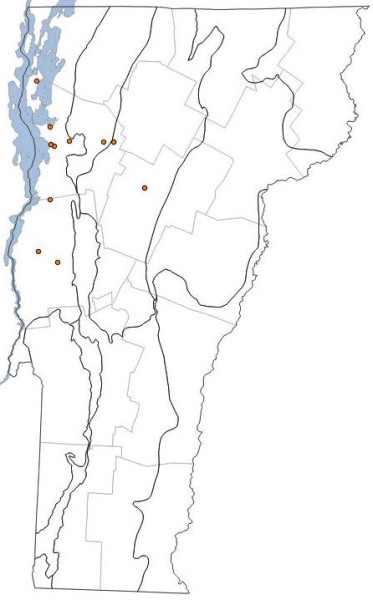B. ashtoni is a rare bumble bee and its populations are declining. It is a social parasite and lays its eggs in host colonies to be raised by that species’ workers. As its host species, B. affinis and B. terricola, have declined, so has this parasitic species. This species has not been found in Vermont for over 15 years and is thought to be extirpated from the state.
Over the last 15 years there have been few ashtoni records in the Northeast. One was collected in the Albany Pine Bush in New York in 2016. Michael Veit found one in New Hampshire in 2010 and Massachusetts in 2008. Sheila Colla found one in 2008 in Ontario. There are three records from 2007 and 2008 from Michel Savard and Pierre-Marc Brousseau in Quebec. Cory Sheffield found one in Nova Scotia in 2002.
it was listed under the Vermont Endangered Species law in 2015 along with its hosts Rusty-patched Bumble Bee and Yellow-banded Bumble Bee. Despite statewide searches during the Vermont Bumble Bee Survey, Ashton’s Cuckoo Bumble Bee has not been found in Vermont since 1999 and might be extirpated from the state.
Select food plants: Vaccinium, Trifolium (Clovers), Rubus, Melilotus (Sweet clover), Solidago (Goldenrods)
Tongue Length: short
Nest Hosts: B. affinis, B. terricola
Similar Species: B. citrinus
General Phenology:
females: April – August
males: June – October
Learn More:
- Discover Life species page
- Encyclopedia of Life species account
- GBIF species page and data








